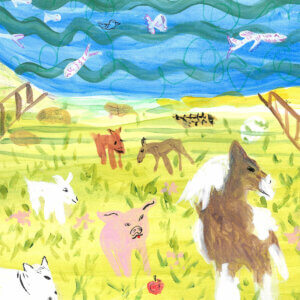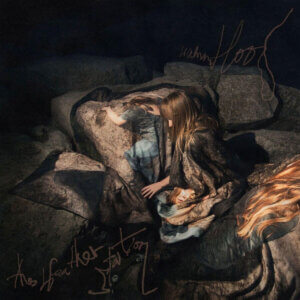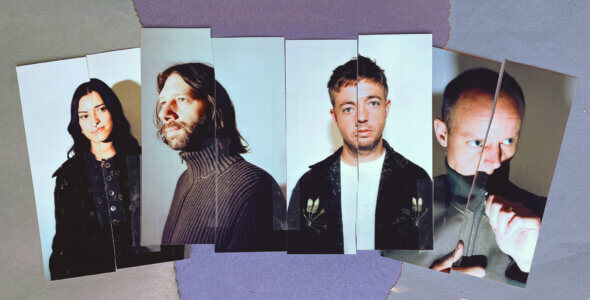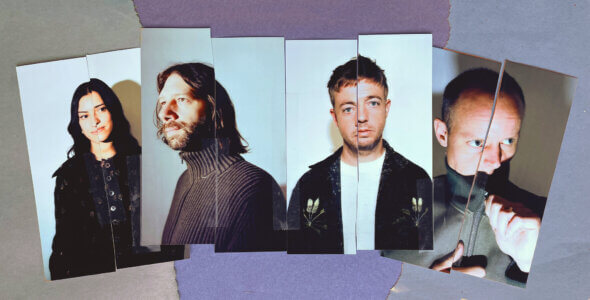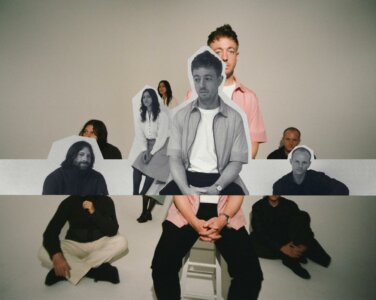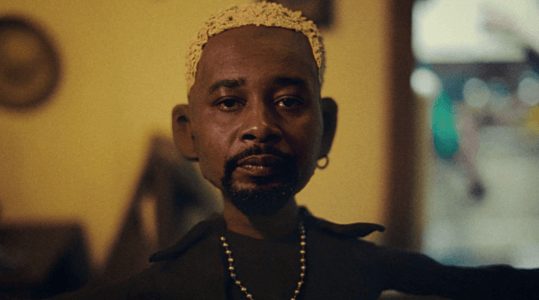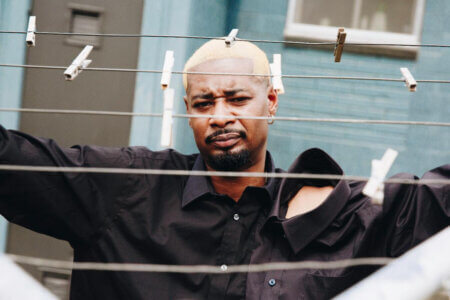Alessandro Cortini Is Finding New Clarity
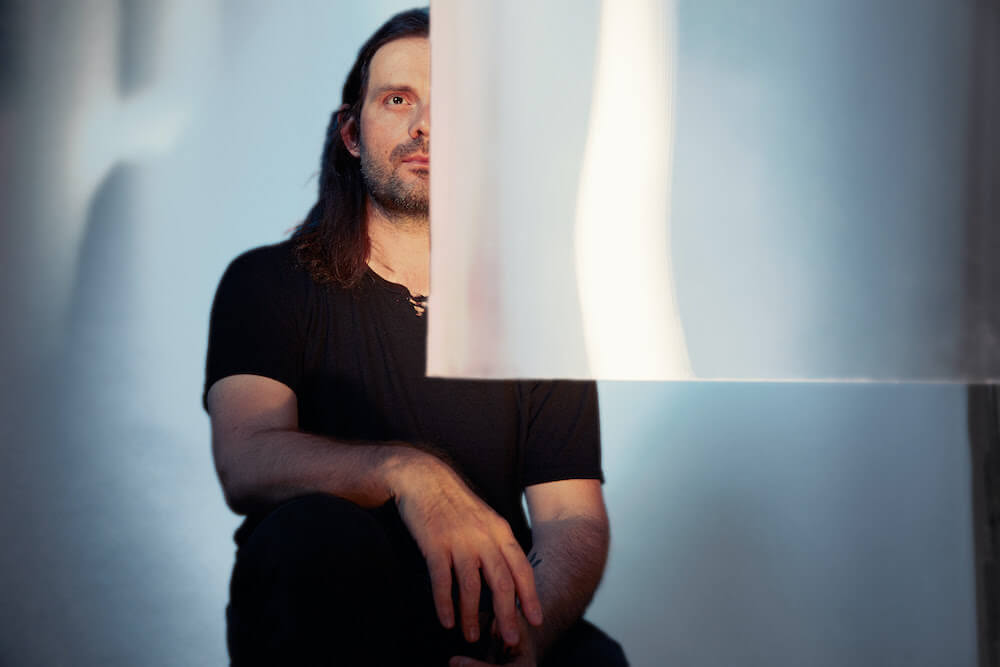
Alessandro Cortini is someone that rarely stops creating. The musician/songwriter/producer may not be a household name but you’ve definitely heard his work. As a member of Nine Inch Nails and Muse, Cortini has toured the world, playing stages to tens of thousands of people. As a producer he has worked on tracks with such disparate acts like Ladytron and Christina Aguilera as well as scoring various video games and his own solo work under various guises.
His latest, SCURO CHIARO which comes out June 11th via Mute Records. The album is a beautifully dense affair that is centred around the theme, which Cortini describes as being, “the opposite of chiaroscuro [the use of light and shadow to give strong contrast], and in a way it shows that no matter how you order things there’s always going to be two elements that tend to be the opposite of each other that make up the truth—or make up everything.” The process to create the album was something that Cortini began on his last record, 2019’s VOLUME MASSIMO, which found him exploring his own personal archive of recordings made over the years and reconstituting these sounds in brand new ways. When we reach Cortini, at his home in Portugal, he explains that when crafting something, a record, a piece of art or anything creative that it isn’t always important that they are made up of brand new ideas.
“It’s kind of like cooking a recipe that involves, you know, vintage wine and that involves seasoned vegetables fresh from the garden,” Cortini explains in his buoyantly friendly manner. “What matters is the recipe at the end all makes sense and is enjoyable as a whole.” Over the years Cortini has recorded something everyday for himself as a way to stay in touch with his love of making music and it was these recordings that informed a lot of the direction of the new album. “I find myself spending a lot of time going back to what I’ve recorded and I know some of it and some I don’t even remember making because it was so spur of the moment. It’s like you don’t necessarily remember the conversations that you really enjoyed having because we’ve had so many. You don’t remember what they were about, but you remember other things. Sometimes you remember where you were, but not when you talked about. When you’re in it, you don’t think too much about it, you just do it and I’m lucky enough that music does that to me. It took me a while to get to that point where it’s just music for myself, not in the sense that I don’t care about the people that listen to it, of course I do, but I felt like the more I do for myself, the stronger the connection with the listener is. So the task for an album is more about collecting these pieces and making them belong together almost like completing a puzzle, but instead of being the pieces out of a brand new box, it was a box that was left at maybe your grandmother’s house or some of it was under your bed,” he explains with a chuckle. “Some of it you hadn’t found in 30 years, but somehow there it is. So the job for a record like this is just shaving certain things here and there, giving it a layer of paint so these things belong together. Instead of writing it all at once, you’re discovering it.”
An interesting comparison can be made to the way Cortini compiles songs from his archive into a new composition, the same way that a playlist or a mixtape is crafted. “I’m not a big fan of playlists,” Cortini explains with a laugh. ”They tried to sell them to you as the equivalent of a mixtape but it’s not the same. To me the mixtape had a moment, an emotional content that is simply non-existent on a playlist. It was usually made for a specific person, It wasn’t just a thing out in the air for everybody, there was an emotional content. With the mixtape itself there was also the process of making it, you know, you were thinking about this person it was for but going back to the album, that emotional conversation starts with the first track and ends with the last one. It’s something that’s exclusive of records, of the album format and I think it’s a gift. The fact that a record is always usually going to be between 35 to 60 minutes, it puts you in an emotional preparedness of receiving this thing but it doesn’t mean you have to listen to it all at once. Going back to one of my favourite records of all time, which is Appetite for Destruction by Guns ‘N’ Roses. There are certain tracks that were deep cuts like “Anything Goes” and you would get to later, you know, but it wasn’t like “Sweet Child O’Mine” or “Paradise City” but you’re giving the opportunity for somebody to listen to something front to back and have this kind of journey I guess, unfold.” While Cortini does create an experience for the listeners of his music to actively take part in, one of the advantages of creating electronic and ambient music is that the listeners can more easily apply their own perspective to the songs instead of having things completely spelt out for them.
“With a lot of lyrical content, it puts the track into a specific subject. Without it, you can make the subject yours and maybe even steer from it more. In general, if a song is about pollution, that’s what you’re going to get from it. If a song is about a breakup or about a party, that’s what you’re gonna get from it. With instrumental music, I think you create a more collaborative, emotional experience with the listener because you give them a canvas. It does feel like everyone who listens to the music, each one of them extrapolates their own emotional meaning from it. I give us a sort of nudge in a direction but the emotional blooming is very personal. That’s why I think there’s a very strong link between me and my listeners, because I think they know that at the end of the day, by doing it for myself, I also make it for them, I think they know that they can find their own emotional identity in the songs. Instrumental music leaves so much to pursue in personal emotional interpretation, as opposed to music with lyrical content and that makes it more unique and more personal to the listener.”
The songs that make up SCURO CHIARO really do leave themselves open for each and every listener to cater a uniquely personal experience. It’s hard to imagine that anyone will come away with the same take on Cortini’s widescreen compositions, besides being able to soak up the beauty within them all. Cortini’s devotion to his craft is admirable and one that guarantees the talented musician will be keeping us enthralled with his work for years to come. “I try to follow the spark, I try to feel as much as I can, as a child does when he plays with a toy,” Cortini explains about his love of creating, “I need to find that pure enjoyment of just feeling good doing what I do.” In turn, through his wondrous soundscapes, Alessandro Cortini does the same for us.
Pre-order SCURO CHIARO by Alessandro Cortini HERE
Latest Reviews
Tracks
Advertisement
Looking for something new to listen to?
Sign up to our all-new newsletter for top-notch reviews, news, videos and playlists.


